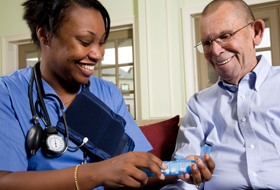Every health care provider aims to provide the highest level of care for their patients. They are molded to become not only skilled in their field but also exhibit the utmost patient care as well as professional dealings. Medical professionals are always faced with the issue of how to improve patient care. They are aware that skills are not the only thing that matter to deliver the best patient care. More often than not, patients appreciate it when they are handled in a most human way.
Patients are now more aware of issues underlining the medical practices like malpractice and they fear being involved in one. This creates a reason for them to seek medical practitioners who will deliver the best patient care. They will likely go to someone whom they trust rather than someone who is popular because of being expert in their field. People will go for competent, affectionate and empathetic health care professionals. For this reason, professionals in health care system are now seeking ways to develop interpersonal skills as early as during their education. Patient care is now emphasized in educational curriculum.
The quality of patient care is not only quantified through technical and personal skills. The health care system needs to ensure that delivering patient care is at its best because of the new technology and infrastructure. The advancement of technology is a contributing factor in innovating new equipment and methods to efficiently get results from patients’ diagnosis.
Moreover, patient care needs to be accessible to the patients anytime and anywhere. This is a great challenge to all health care professionals considering that there are still areas around the globe that are far beyond reach.


 Approaches towards patient care improvisation has been tried and tested over the years. There are strategies that worked well but many failed. One approach that shows good result is the promotion of engagement among the patient to their medication processes and activities. Engagement among the patient towards their own healthcare makes their recovery faster. The Healthcare Advisory Board named it as one of the three pillars for healthcare transformation in its recent Playbook for Accountable Care.
Approaches towards patient care improvisation has been tried and tested over the years. There are strategies that worked well but many failed. One approach that shows good result is the promotion of engagement among the patient to their medication processes and activities. Engagement among the patient towards their own healthcare makes their recovery faster. The Healthcare Advisory Board named it as one of the three pillars for healthcare transformation in its recent Playbook for Accountable Care.




